Some of the links in this post may be affiliate links.
Welcome to the ultimate care guide for Crassula ovata, commonly known as Jade Plant or Money Plant. This southern African native is a fantastic, easy-to-grow succulent indoors. In addition to discussing all the basic care topics that will help make your jade plant thrive, I’ll also go over many frequently asked questions concerning a variety of jade plant problems and how to fix them, so keep reading!
Whether you just want some specific tips for care, you think your jade plant dying, or you just want to revive your plant a bit, this comprehensive, easy-to-follow post is for you.
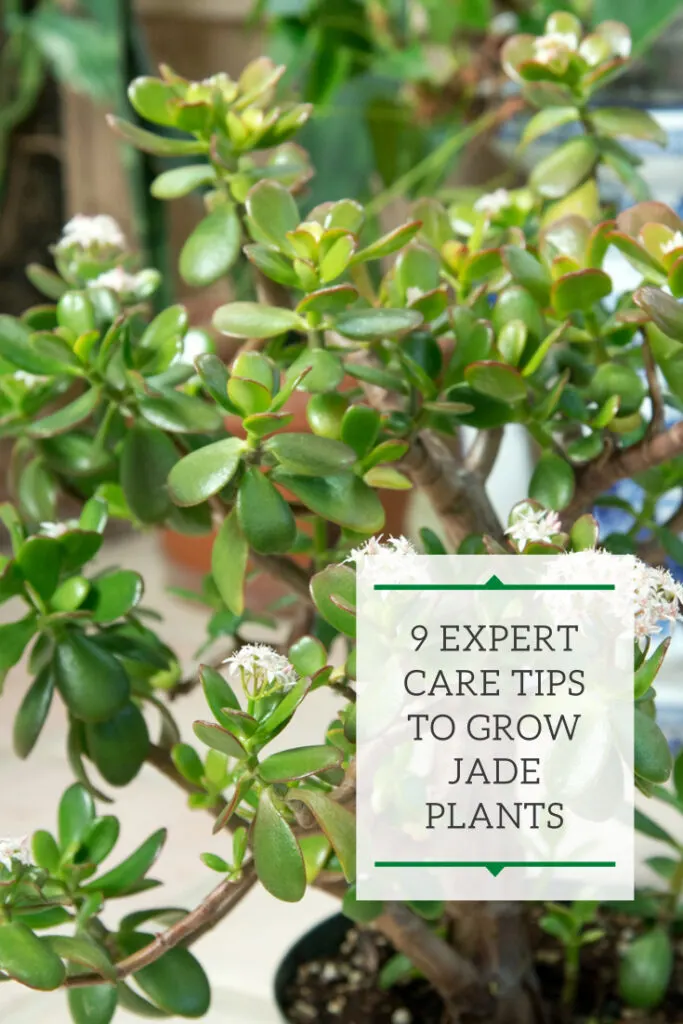
Jade Plant, known as Crassula ovata, is sometimes incorrectly classified as Crassula argentea, Crassula portulaca, and Crassula obliqua. These are incorrect, and the correct botanical name is Crassula ovata. Crassula comes from the Latin word meaning “thick,” describing its succulent leaves, while ovata means egg-shaped (referring to the shape of the leaves).
Table of Contents
Jade Plant or Crassula Ovata Care
1. LIGHT
Indoors, always situate your jade plant immediately in front of a window for best growth. Many different window exposures can work, but there are a few things to keep in mind.
Jade plants do best if you can provide plenty of direct sun. Ideally, place your plant right in front of Southern windows (in the Northern hemisphere) or Northern windows (in the Southern hemisphere), as this will encourage compact and very sturdy growth.
4 hours or more of direct sun is a good amount of light to aim for. Providing enough direct sun will also produce beautiful red edges on the leaves. Note that this is normal and not a cause for concern!
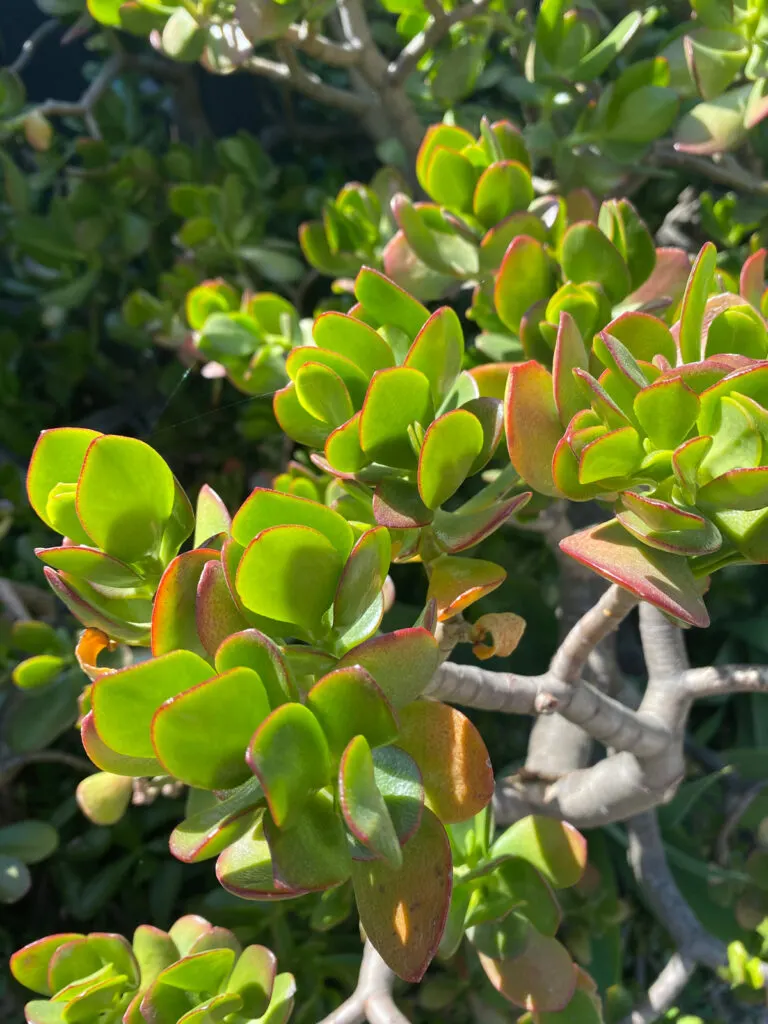
Unnobstructed Eastern or Western exposure windows are also great as these will have a few hours of sun in the morning or afternoon, respectively.
This is not to say that you can’t grow this plant in a window with no direct sun! These include Northern windows in the Northern hemisphere, or Southern windows in the Southern hemisphere. They can also include any windows that are obstructed somehow and have filtered light or even no direct sun at all.
You certainly can grow jades in the absence of direct sun, but you will have to manage your expectations. Leaves will be darker green and the resulting growth will be more stretched out. Plants will also develop drooping stems over time.
Since I don’t have any particularly sunny windows, and my jade plant’s growth was droopy, I now grow mine under a very bright grow light and the resulting growth is much more compact and sturdy.
In the end, you can adjust your lighting or window exposure to achieve the look that you prefer in your plant, but regardless, always keep your plant immediately in front of a window, or under a grow light.
These are NOT low light plants that can be kept far from a window.
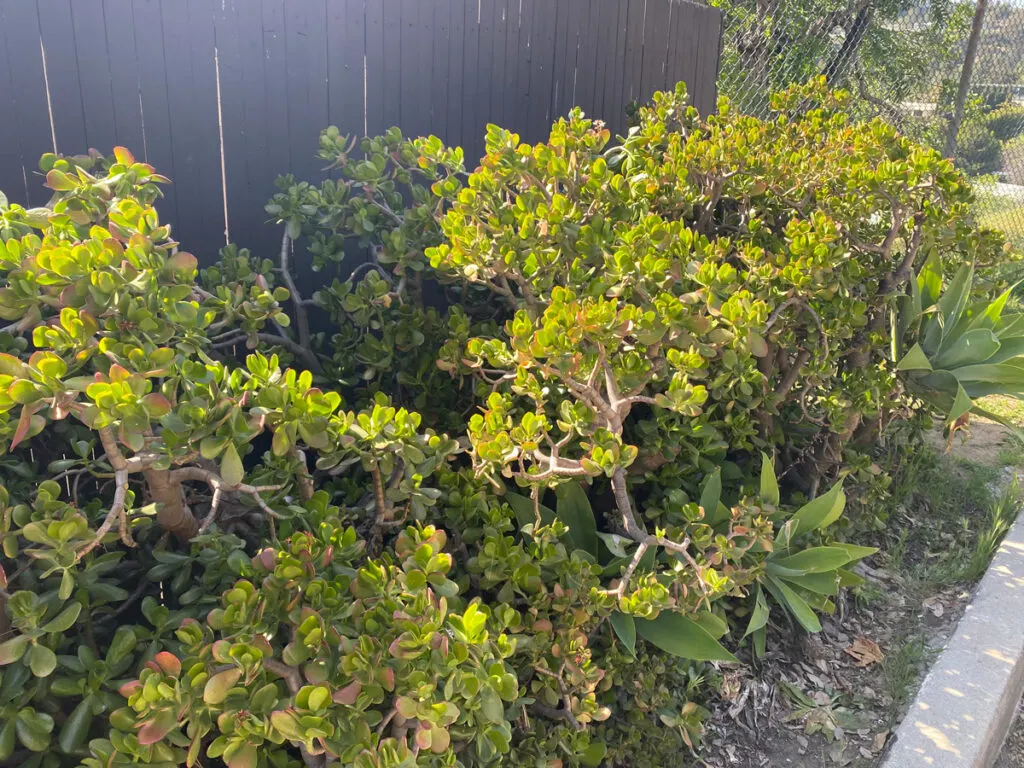
2. WATERING
My approach to watering jade plants, like any succulent, is to provide deep waterings and then allow the potting mix to dry out completely, or almost completely, in between.
Although they are succulents, you can still easily still dehydrate your jade plant if the potting mix is left completely dry for too long.
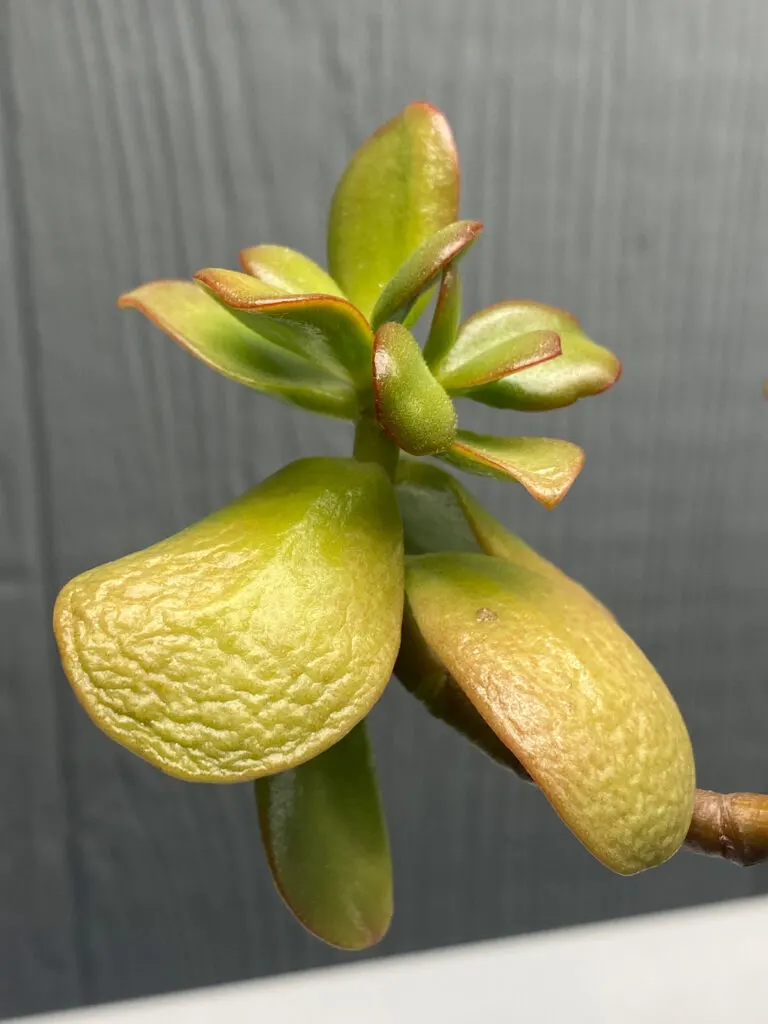
Note that if your plant is growing in very bright light, whether in a sunny window or a bright grow light, it will dry out much more quickly so you’ll have to keep a close on on the potting mix moisture.
In the winter time, you can safely allow your potting mix to go completely dry before watering again.
Never allow your plant to sit in water at any time as this can quickly promote root rot! Always discard excess water.
Lastly, many people have asked me how often to water their jade. The answer is that it depends! I never will recommend a frequency of watering because everyone has very different conditions that affect how quickly your potting mix dries out.
Water when your potting mix goes completely dry, or close to it (whatever frequency that happens to be for you).
3. POTS, POTTING MIX & REPOTTING
Jade plants need rapidly draining potting mixes. I like to use 2 parts of your favorite succulent/cactus potting mix, to which I add 1 part ¼” pumice (shown below).
I love to use pumice in my succulent mixes because it is heavy, adds stability to your pot and doesn’t float to the surface like perlite tends to do.
Jade plants can happily stay in the same size pot for quite a long time, but they eventually need bigger pots. Evaluate the need to repot at least every couple years or so.
You may find that your plant has become very top heavy, or that the potting mix dries out much more rapidly than normal.
These can be indications of needing to be repotted, so you may want to take the plant out of its pot and check out exactly how root bound it is.
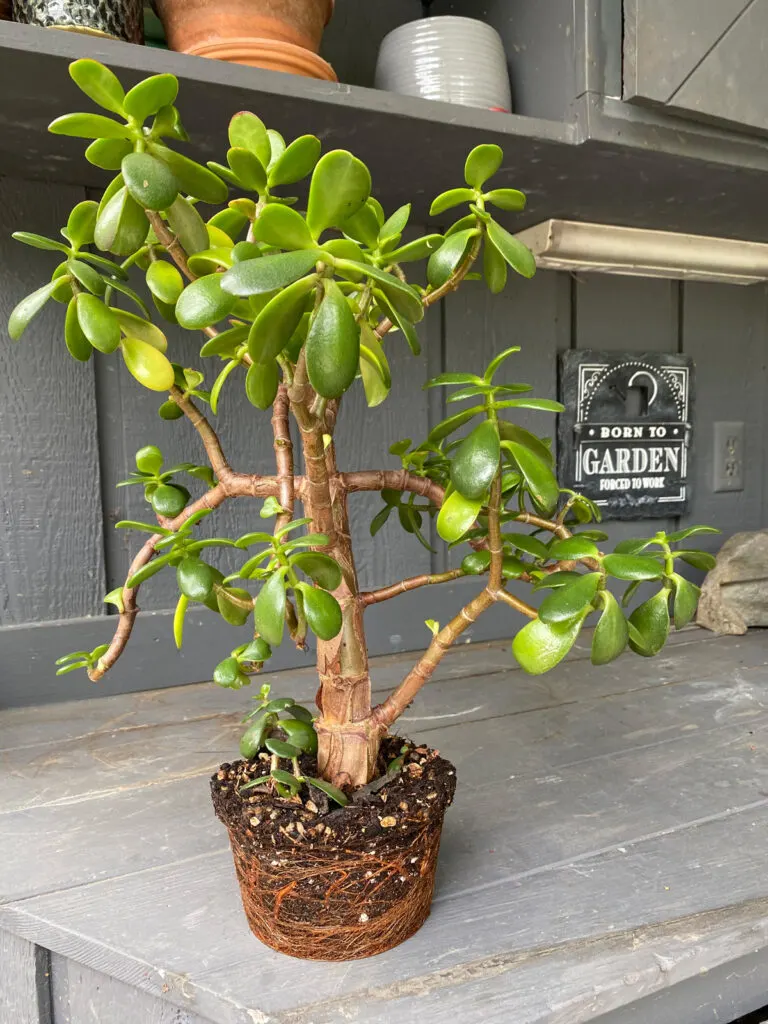
There are a couple different methods of repotting your jade plant.
Repotting Into the Same Size Pot
If you’d like to keep your plant in the same size pot and don’t want it to grow much bigger, you can take it out of the pot, lightly prune the roots as well as some of the stems as well.
This will also help encourage the trunk to get thicker and will allow you to keep the plant in good health in the same size pot.
Repotting Into a Bigger Pot
Or if you want your plant to continue growing and get bigger, simply loosen the root ball, and go up one pot size. For example, if your plant was in a 6 inch pot, go up to an 8 inch pot.
If you go too much bigger, the potting mix may take too long to dry out, and this is especially detrimental to succulents.
Pot Type Choices
Choosing the right type of pot is an important consideration. Since jade plants will get very top heavy, I prefer to grow them either directly in a terra cotta pot, or even a glazed ceramic pot in order to provide stability.
Another method I like to use is to simply grow them in plastic nursery pots, and then slip it inside a decorative cache pot. This way, it is much easier to repot when the time comes. Your plant must ALWAYS be growing in a pot with drainage holes.
Check out my blog post on choosing pot types and the pros and cons of each for more details.
4. HUMIDITY
Fortunately, jade plants are wonderfully tolerant of dry air so there is no need to provide any extra measure to
5. FERTILIZING
Like any succulent, jade plants should be fed sparingly. Not only do succulents store water in their fleshy growth, but they also store food.
I don’t have a strict fertilizing schedule, but I like to fertilize maybe once a month or so during the Spring and Summer months. I refrain from fertilizing succulents the remainder of the year.
Dyna-Gro Grow is my fertilizer of choice for my plants and is a fantastic, urea-free, complete fertilizer that has all the micro and macro nutrients that plants need to thrive.
I simply add ¼-½ teaspoon per gallon of water and use this once or twice a month during the growing season.
If I place my plant outdoors during the summer, I sometimes also use a Fish Emulsion & Seaweed fertilizer instead. I don’t use this indoors since it has an odor to it, but I love using it outdoors since it is amazingly good for your plants!
6. FLOWERING
Did you know that jade plants bloom? Most of the time it doesn’t happen indoors, unless your plant is getting enough light. Jades produce beautiful clusters of star-shaped white flowers. Some varieties even have pinkish flowers.
In addition to having enough light, flowering can also be encouraged with longer nights and cooler temperatures in the Fall. You can achieve this easily by placing your plant outdoors. In my climate, I place my plants outside in the Spring as soon as night temperatures stay consistently above 50F or so.
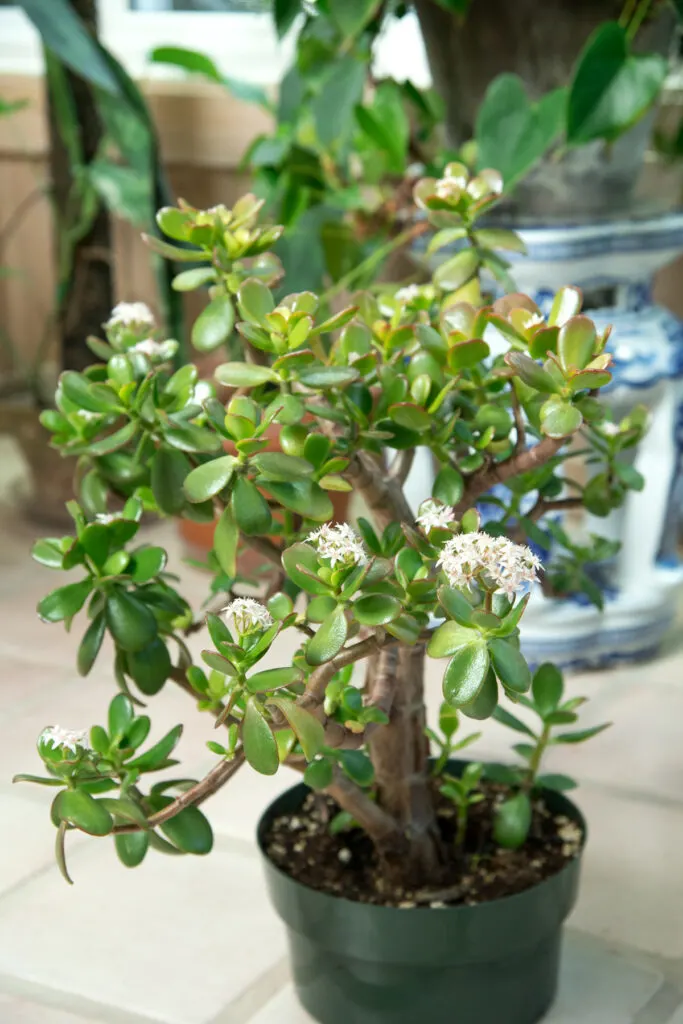
A period of several weeks of drier soil and cooler nights in the Autumn will help trigger blooming in your jade.
7. PROPAGATION
Jade plants can easily be propagated by both single-leaf cuttings or stem cuttings. Propagation can be successful year-round, but your chances of success will probably be best during Spring and Summer.
As with any succulent, make sure that you allow your cuttings to air dry for a few days before starting the propagation process as this will allow the cut to callous over and help to prevent rotting. This goes for both soil propagation and water propagation.
Although water propagation is possible, soil propagation is safer and easier for succulents.
For stem cuttings, simply insert into potting mix after you’ve allowed the cutting to callous over for a few days. Water it, and allow the top inch of the mix to dry out, and then repeat the watering cycle. Your cutting should root and start growing in a few weeks.
For more step-by-step details with photos, read my blog post on how to propagate jade plants from stem cuttings.
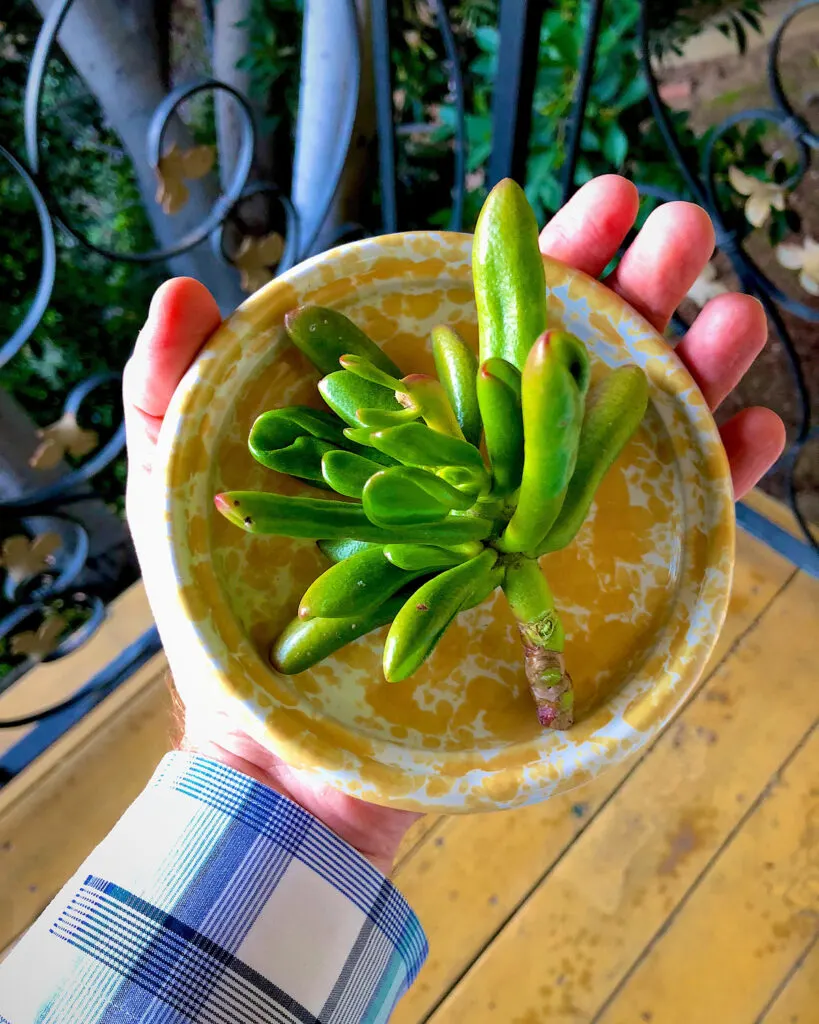
If you want to create a lot of plants, the easiest way to do this is from single-leaf cuttings. Check out my step-by-step guide on Jade Plant Leaf Propagation. It is a fun and easy way to propagate these plants so you can increase your collection or share with friends!
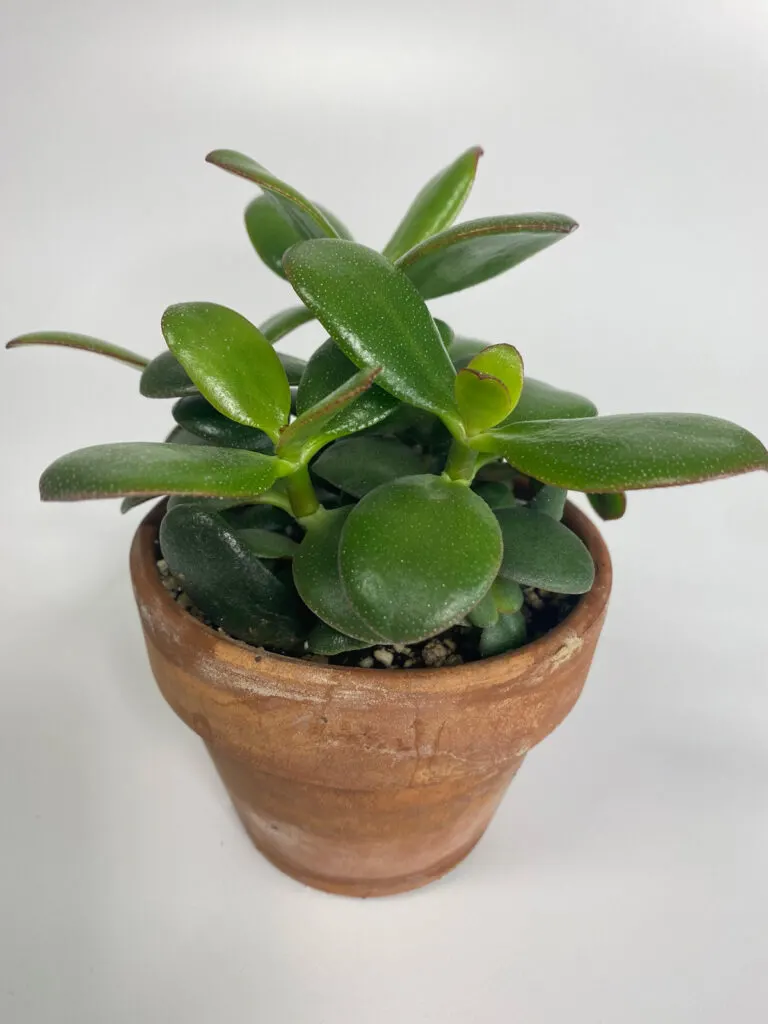
8. PESTS
Not too many pests bother jade plants, but I have seen mealy bugs on my own plant. Succulents are reportedly sensitive to certain insecticides, so I recommend a cheap and effective solution: 70% isopropyl alcohol.
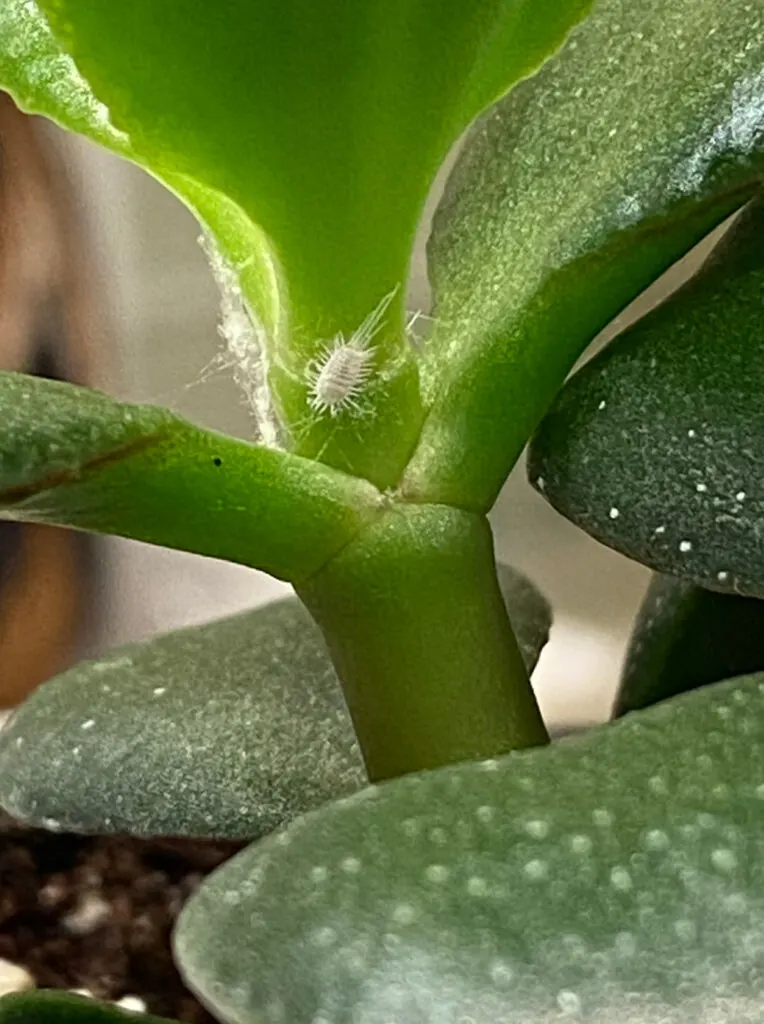
Simply spray 70% isopropyl alcohol right onto the visible mealybugs. To be safe, be sure to spray all plant surfaces, especially where the leaves meet the stems. This is where mealybugs will tend to collect.
You may want to avoid too much direct sun during application, and for a couple days afterwards to avoid any potential burning.
The 70% isopropyl alcohol will kill the mealybugs just about instantly and you will see them change color right after spraying. The alcohol will evaporate pretty quickly and only leave water behind. This is a very effective and safe method to treat your jade and any succulents for mealybugs.
You can also use insecticidal soap. But you have to treat for several weeks. Check out my detailed post on treating for mealybugs for best results.
9. PRUNING
Pruning your jade plant can help keep it more compact and vigorous. If your plant has been grown in a lower light environment and it has gotten leggy, you can lightly prune to help reshape the plant. Just be sure to increase the light from that point in order to encourage a bushier plant.
By pruning your plant, you will trigger fresh growth as well as encourage the trunk to thicken, resulting in a sturdier plant.
Try not to overprune your jade and never remove more than a third or the length of the stems. They can take harder pruning, but will take much longer to recover.
When you prune your plant, look for rings around the stem like in the photo below. Simply prune right above the ring. Often times, you can even see new growth starting already (right where my index finger is pointing).
Be sure not to miss my blog post on how to make a jade plant bushy (by pruning) for a detailed, step by step guide with photos.
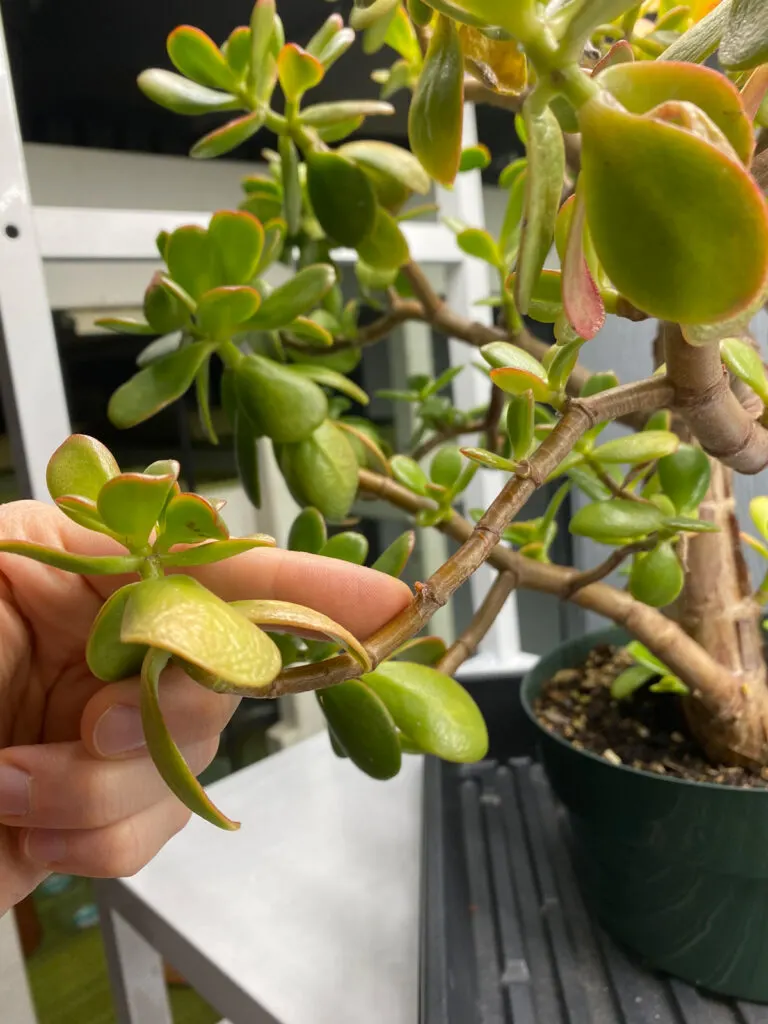
Jade plants make excellent bonsai specimens if you are into that.
Frequently Asked Questions about Jade Plant
Why is the bark peeling on my jade?
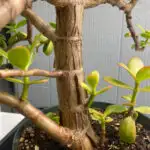
This is no cause for alarm and is perfectly normal. You’ll typically see this on older jade plants. Just leave it be.
Can jade plants burn outdoors?
Yes they can! Although they can take full sun, if you’re moving your plant from indoors to outdoors during warmer months, you need to acclimate your plant slowly to higher light otherwise it can burn. Start out by keeping it full shade outdoors for a couple weeks, and then slowly introduce some direct sun a little at a time. Once acclimated, they can take full sun.
Why is my jade plant turning red?
This is perfectly normal, and reddish-tinged leaves just means that they’re getting plenty of light. It is no cause for alarm.
How can I get my jade plant to bloom?
Assuming your plant is old enough, you can encourage you jade to bloom with enough light, drier potting mix and cooler night temperatures (around 55F or so at night).
How can I get my plant to have a thicker trunk?
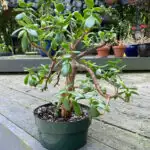
Assuming you have your plant growing in good light and have a good watering routine as well, you can encourage a thicker trunk to grow by pruning your plant a bit. Don’t expect a thicker trunk right away as it will take some time, so have some patience.
Why are my leaves shriveled?
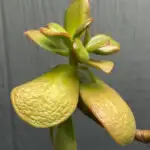
Feel your potting mix. Is it dry? Has it stayed dry for a while? Shriveled or prune-like leaves are often due to your potting mix staying too dry for too long. Eventually these leaves will turn crispy and brown, and fall off.
Why are my leaves yellow and dropping off?
Feel your potting mix. Is it wet? Has it stayed wet for a while? Is it sitting in water? If your potting mix is staying wet for too long, your leaves can often turn yellow and fall off. Leaves may also feel squishy.
Is jade toxic to pets?
According to the ASPCA, jade is toxic to cats, dogs, and horses. Some signs of ingestion include vomiting, depression and incoordination.
That wraps it up! I hope you’ve enjoyed this post on caring for Crassula ovata, or jade plant. This plant has a rich history and is also used in feng shui. If you’re interested in this, check out this resource on using jade plants in feng shui. Jade plants are said to bring good luck to the home.

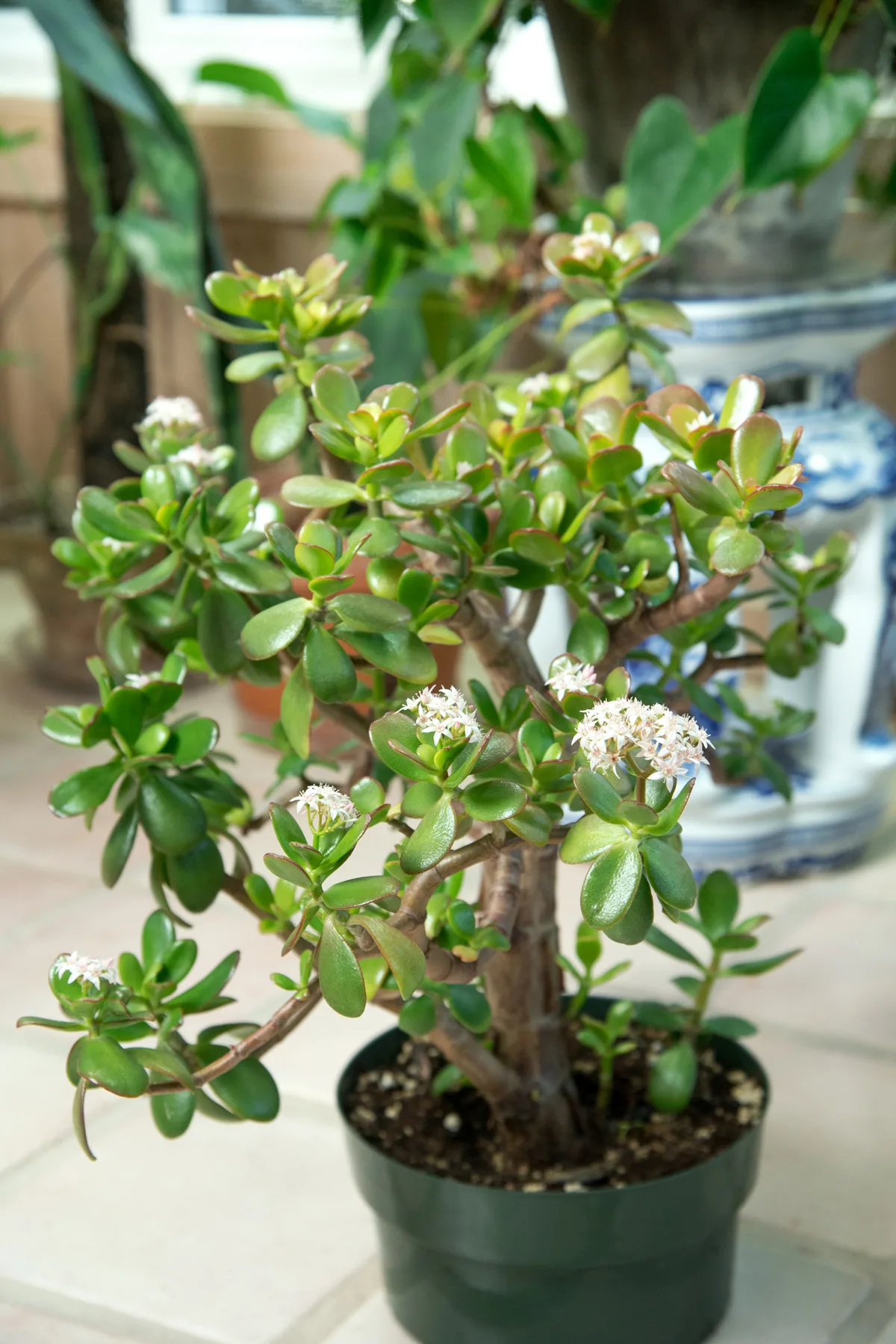
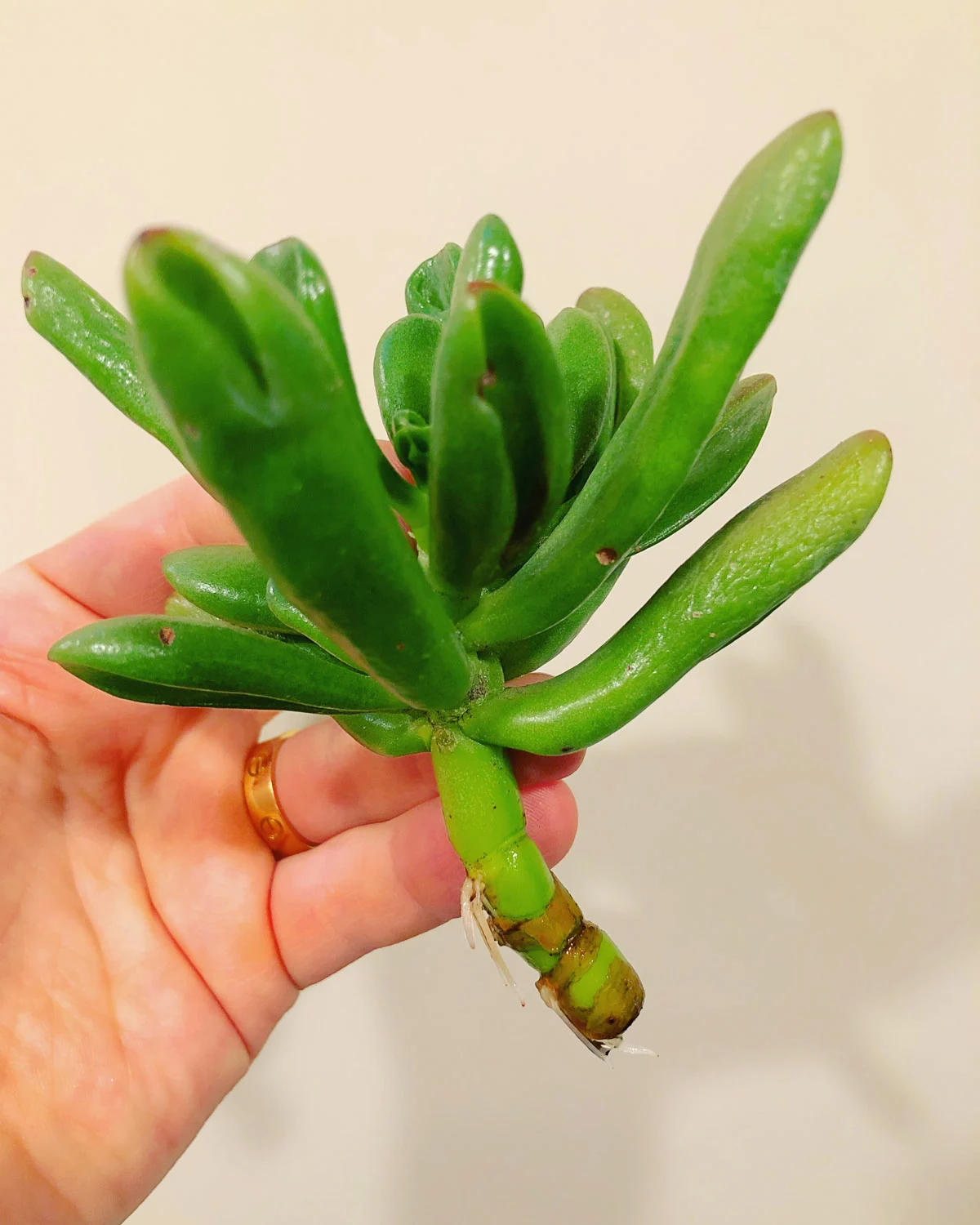
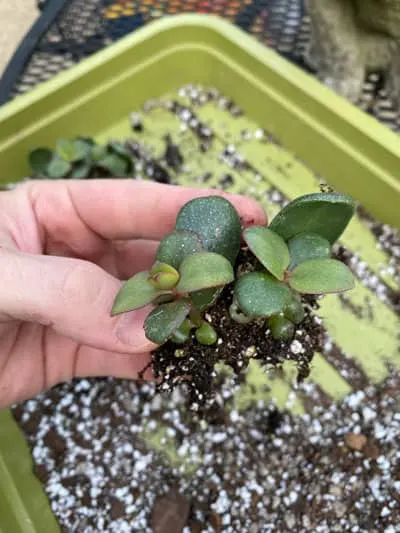
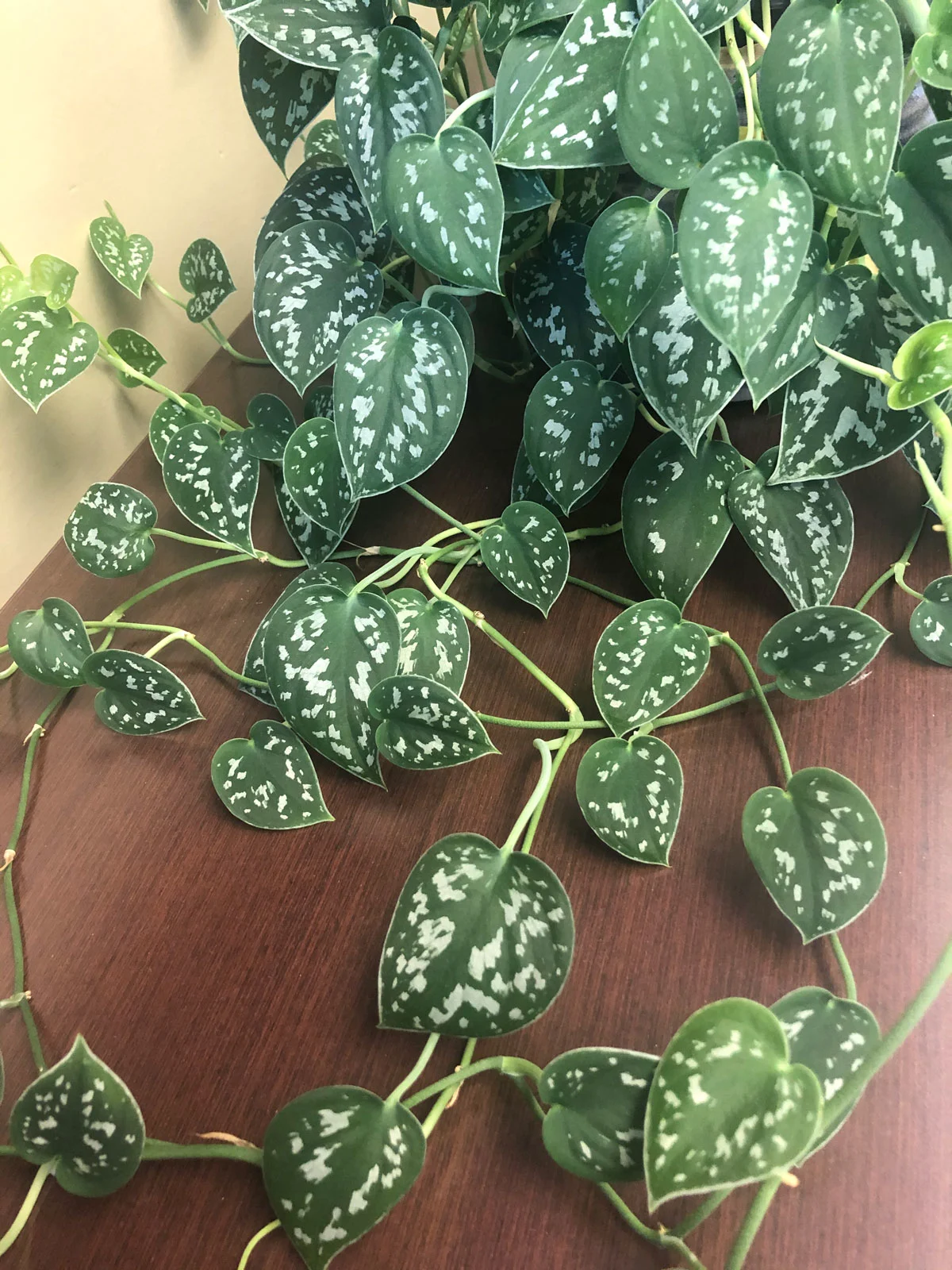
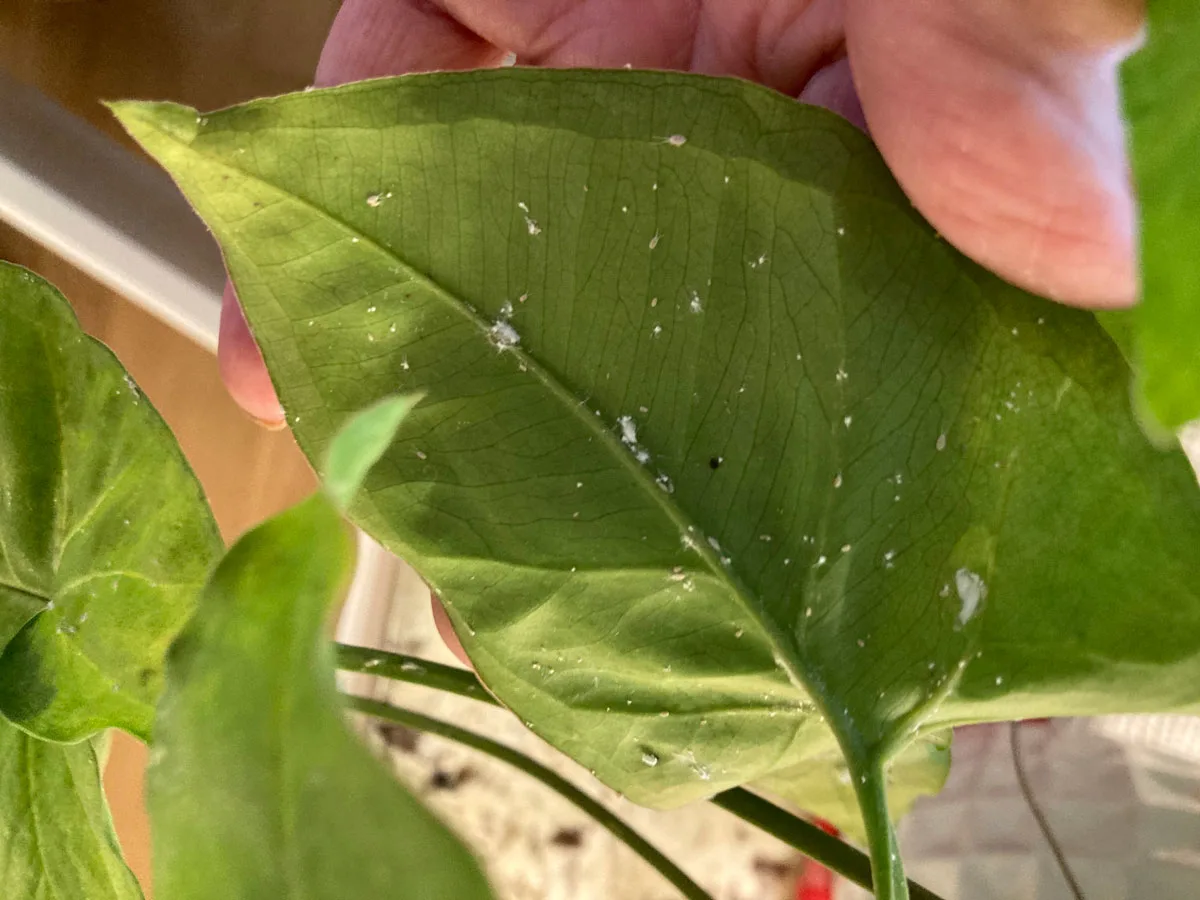
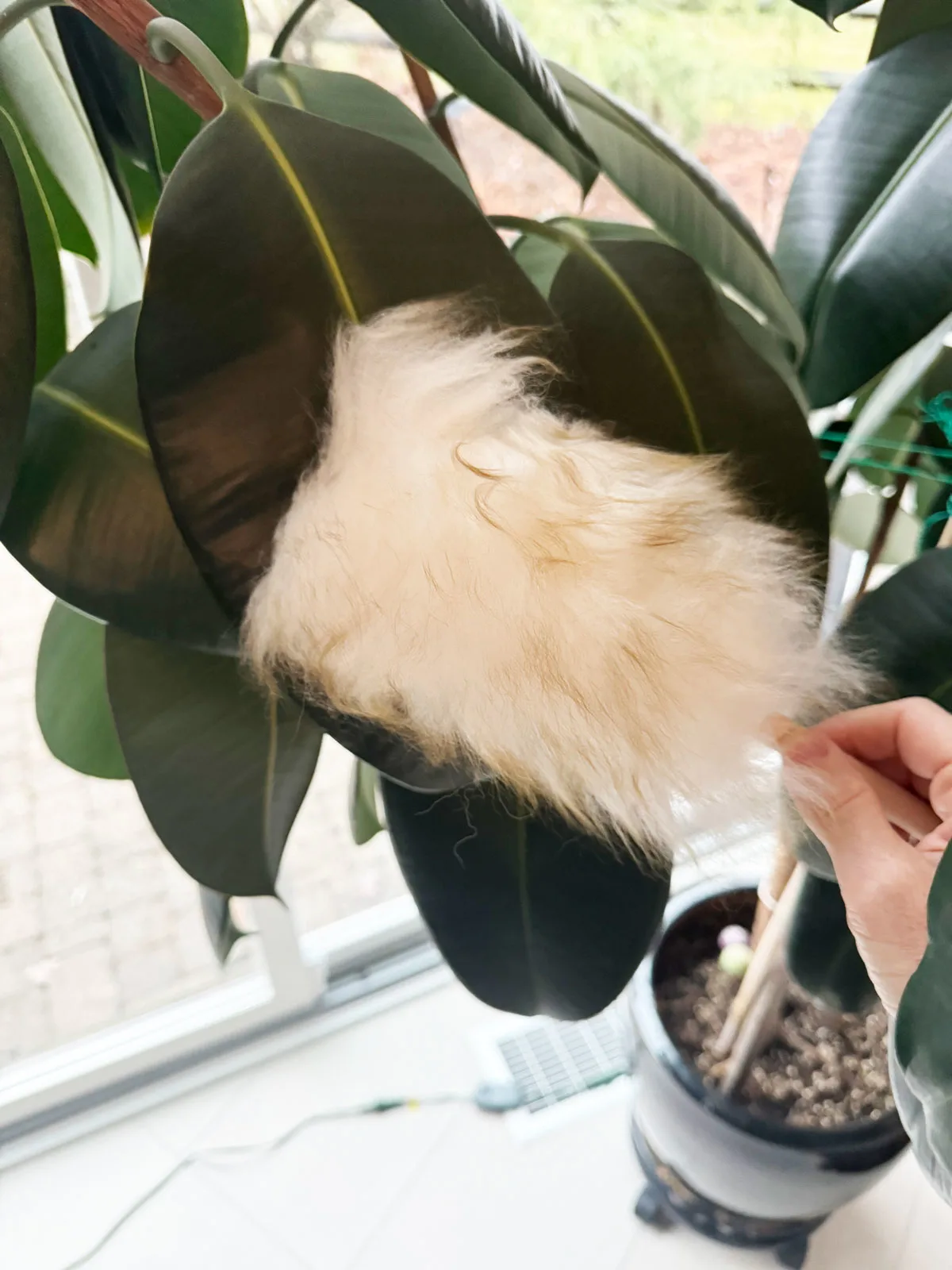
Ann
Tuesday 29th of August 2023
Do you use Dyna-Grow for succulents also? I just bought some for my plants, but I was going to use the Schultz 7-7-7 for my succulents. Your knowledge is so helpful. Thank you
Raffaele
Wednesday 30th of August 2023
Hi Ann! I sometimes do (I get lazy with succulent fertilizing because they don't need terribly much). But your 7-7-7- should be fine! However, I would recommend a Schultz fertilizer that is for succulents. It is 2-7-7 (less nitrogen for succulents).